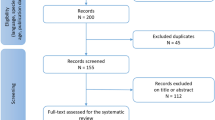Abstract
Purpose Methods of measuring return to work (RTW) following temporary disability are diverse. The purpose of this study was to compare different measures of RTW within a 12-month period using a well-defined population of patients treated with Percutaneous Coronary Intervention (PCI) and weekly administrative data on transfer payments. Methods Different RTW measures were defined based on weekly data from 12 months follow-up after PCI and agreement between definitions was expressed as Cohen’s kappa. Prognostic factors for RTW were compared using logistic regression. Results Among those working before the PCI, 70 % were back to work at 6 months after the PCI and 76 % 1 year after when using cross-sectional measures and excluding those who left the workforce permanently during follow up. When using a time to event measure, 77 % experienced RTW during follow up, while only 60 % experienced RTW without recurrent sick-leave events during the following year. We found moderate to near perfect agreement when comparing the measures, with lowest agreement between the time-to-event measure without relapses compared to the other measures. When comparing prognostic factors for the different RTW outcomes, we found most associations similar in size, except from the clinical measure left ventricular ejection fraction, possibly related to recurrent sick leave. Conclusions Different measures revealed some differences in proportions of RTW. However, high agreement between RTW-definitions was found. Choice of RTW-definitions should depend on study purpose; simple cross-sectional methods are sufficient in prediction of RTW and analysis of risk factors, while methods capturing relapses are recommended when sustainability, prognosis and vulnerability are in focus.


Similar content being viewed by others
References
Young AE, Roessler RT, Wasiak R, McPherson KM, van Poppel MN, Anema JR. A developmental conceptualization of return to work. J Occup Rehabil. 2005;15(4):557–68.
Wasiak R, Young AE, Roessler RT, McPherson KM, van Poppel MN, Anema JR. Measuring return to work. J Occup Rehabil. 2007;17(4):766–81.
Krause NLT. Return to Work After Occupational Injury. In: Barling J, Frone MR. (red), editor. The Psychology of Workplace Safety. Washington DC: American Psychological Association; 2004. p. 265.
Bultmann U, Franche RL, Hogg-Johnson S, Cote P, Lee H, Severin C, et al. Health status, work limitations, and return-to-work trajectories in injured workers with musculoskeletal disorders. Qual Life Res. 2007;16(7):1167–78.
Butler R, Johnson W, Baldwin M. Managing work disability: why first return to work is not a measure of success. Industrial Labour Relat Review. 1995;48:452–69.
Steenstra IA, Lee H, de Vroome EM, Busse JW, Hogg-Johnson SJ. Comparing current definitions of return to work: a measurement approach. J Occup Rehabil. 2012;14(22):394–400.
Lund T, Labriola M. Sickness absence in Denmark—research, results and reflections. Scand J Work Environ Health Suppl. 2009;7:5–14.
Hjollund NH, Larsen FB, Andersen JH. Register-based follow-up of social benefits and other transfer payments: accuracy and degree of completeness in a Danish interdepartmental administrative database compared with a population-based survey. Scand J Public Health. 2007;35(5):497–502.
Schmidt M, Maeng M, Jakobsen CJ, Madsen M, Thuesen L, Nielsen PH, et al. Existing data sources for clinical epidemiology: The Western Denmark Heart Registry. Clin Epidemiol. 2010;2:137–44.
Landis JR, Koch GG. The measurement of observer agreement for categorical data. Biometrics. 1977;33(1):159–74.
Statistics Denmark. Population by socioeconomic status. Available at: statbank.dk. Accessed 02/08, 2012.
Goertz MN. Prognostic indicators for acute low-back pain. Spine (Phila Pa 1976) 1990 Dec;15(12):1307-1310.
Acknowledgments
This study was funded by The Danish Heart Association, The Danish Working Environment Research Fund and The Western Denmark Research Forum for Health Research.
Ethics
The study was approved by Danish Data Protection Agency j.no. 2007-41-0991.
Conflict of interest
The authors declare that they have no conflict of interest.
Author information
Authors and Affiliations
Corresponding author
Rights and permissions
About this article
Cite this article
Biering, K., Hjøllund, N.H. & Lund, T. Methods in Measuring Return to Work: A Comparison of Measures of Return to Work Following Treatment of Coronary Heart Disease. J Occup Rehabil 23, 400–405 (2013). https://doi.org/10.1007/s10926-012-9405-x
Published:
Issue Date:
DOI: https://doi.org/10.1007/s10926-012-9405-x




